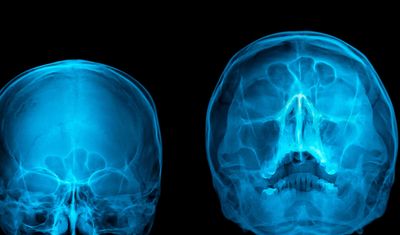FESS - functional endoscopic sinus surgery
There are a lot of air cells which come together during development of the baby in the womb and align
themselves so that they stay in the path of airflow through the nose, within the facial bones. These cells
collectively form the sinuses which help in 1. Lightening the weight of the skull and 2. Moistening the air
we breathe by producing mucus, so it reaches the lungs without being too dry. When there is a common
cold, it typically involves swelling of the skin lining of the nose and these sinuses, sometimes this
swelling doesn’t reduce and the sinuses continue to produce mucus which cannot come out into the
airway causing stagnation. This leads to heaviness of the face, fever, headache or facial pains and when it
gets infected, we use the term sinusitis.
The treatment typically involves reducing the swelling and clearing the mucus. This can be done
medically by giving oral medications, nasal drops, nasal sprays and nasal douches or washing the nose.
However, if the response to this even after 6 weeks is very poor, then we resort to surgey.
As the name indicates, FESS is a surgery done in a minimally invasive way to restore the function of sinuses located within the facial. bones.

Frequently Asked Questions on FESS
Prior to surgery, a CT scan is done. This acts as a guide to locate the position of infected cells, and as a
roadmap to our approach during FESS.
A lot of times, FESS becomes restricted to just one or two sinuses as our aim is to keep the normal anatomy intact to whatever extent possible. However in cases of repeat surgery or where the surgeon feels the need for more advanced options, newer system called navigation is available which uses the CT scan intraoperatively to look for location of instruments and anatomical position of the infected sinuses with live movements of the surgeons instruments being monitored continuously.
Once the surgery is done, a nasal pack will be placed in the nose which remains in place for 36 to 48
hours depending on the extent of surgery and blood loss during surgery, the entire duration of which the patient is expected to stay back at hospital.
Patient is discharged after two hours of pack removal with instructions about follow up, medications and nasal washes. Follow up is done at 7 th day, 15 th day and 1 month post surgery.
This website uses cookies.
We use cookies to analyze website traffic and optimize your website experience. By accepting our use of cookies, your data will be aggregated with all other user data.